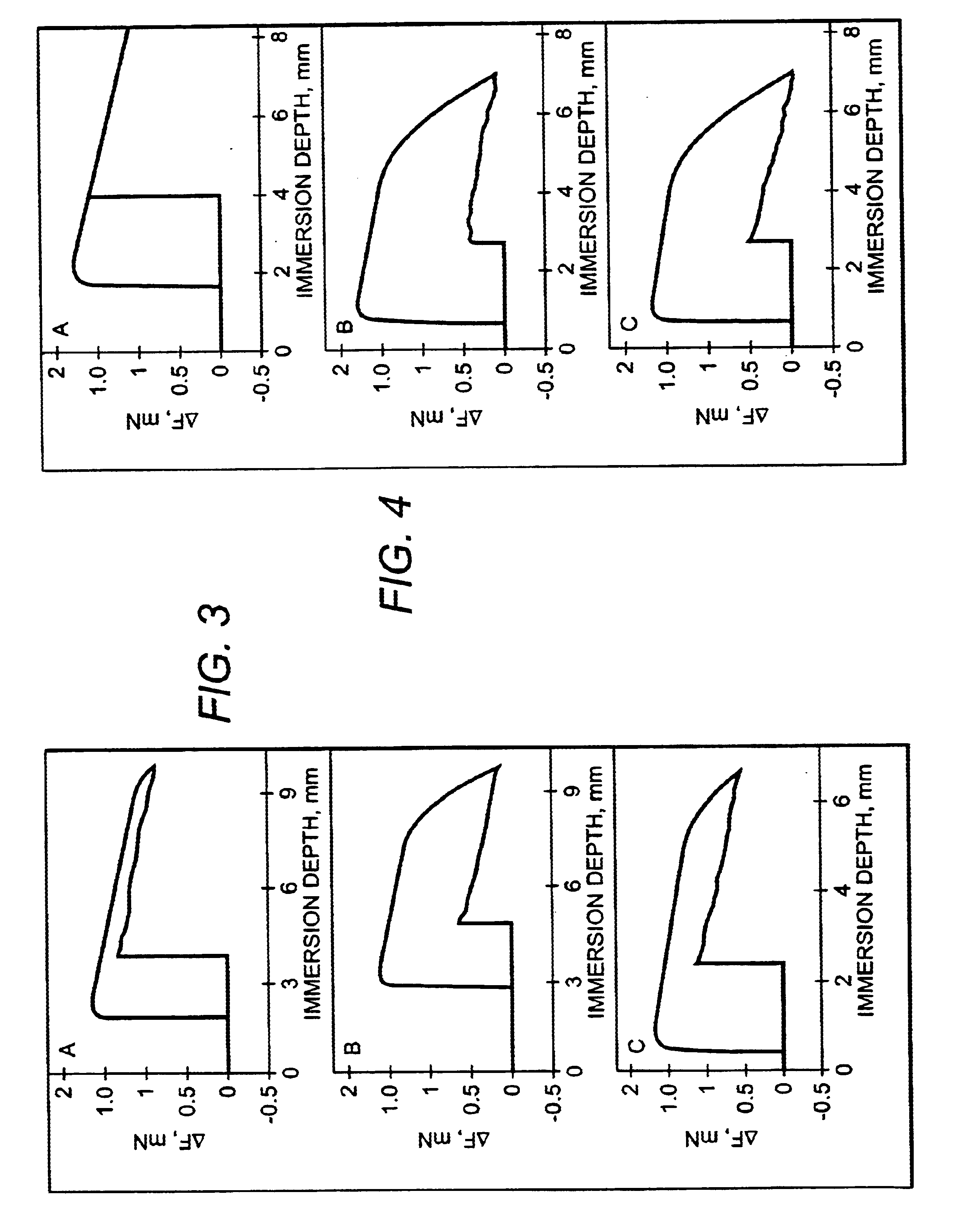Immobilizing mediator molecules via anchor molecules on metallic implant materials containing oxide layer
a technology of metallic implant materials and anchor molecules, which is applied in the field of immobilization of mediator molecules on the surface of metallic or ceramic materials, can solve the problems of long healing process, high personal and treatment costs, and difficult and strenuous implantation operation
- Summary
- Abstract
- Description
- Claims
- Application Information
AI Technical Summary
Problems solved by technology
Method used
Image
Examples
example 2
Immobilization of BMP on Powdered Titanium Without a Spacer
a) Production of an Implant Surface Capable of Reaction
The production of an implant surface capable of reaction took place in the same way as in Example 1.
b) Activation of the Surface of the Implant
1.0 g of the metal derivatized with the aminoalkylsilane derivative is added to 50 ml 0.03 M H.sub.3 PO.sub.4 with a pH adjusted to 4.0. To this were added 100-200 mg of a water soluble carbodiimide, for example 1-cyclohexyl-3-(2-morpholinoethyl) carbodiimide-methoxy-p-toluene sulfonate.
c) Immobilization of the Protein
BMP is added directly to the activated titanium powder mentioned above in an amount of 0.1-3.0 mg / g titanium powder and is incubated overnight at 4.degree. C.
example 3
Immobilization of BMP on Flake Shapes Titanium With Spacer
a) Production of an Implant Surface Capable of Reaction
The activation of the implant surface took place in the same way as in Example 1. Instead of titanium powder the same amount of titanium flakes was simply used.
b) Activation of the Implant Surface and Insertion of a Spacer Molecule
The metal flake activated with the aminoalkylsilane derivative is added to 12.5 ml 2.5% glutaraldehyde in 50 mM NaH.sub.2 PO.sub.4, pH 7.0. Reaction is carried out until a change of color is observed. Subsequently the reaction product is separated over filter and is washed with copious amounts of distilled water.
c) Immobilization of the Protein
BMP in an amount of 0.1-3.0 mg / g titanium flakes is added to the washed reaction product at neutral pH and is incubated overnight at 40.degree. C.
example 4
Immobilization of BMP on Flaked Titanium Without Spacer
a) Production of an Implant Surface Capable of Reaction
The activation of the implant surface took place in the same way as in Example 1. Instead of titanium powder the same amount of titanium flakes was simply used.
b) Activation of the Implant Surface
The metal flakes derivatized with the aminoalkylsilane are added to 50 ml 0.03 M H.sub.3 PO.sub.4 with a pH adjusted to 4.0. To this were added 100-200 mg of a water soluble carbodiimide for example 1-cyclohexyl-3-(2-morpholinoethlyl)-carbodiimide-methoxy-p-toluene sulfonate).
c) Immobilization of the Protein
BMP was added directly to the coupling batch mentioned above in an amount of 0.3-3.0 mg / g titanium flakes and is incubated overnight at 4.degree. C.
PUM
| Property | Measurement | Unit |
|---|---|---|
| Temperature | aaaaa | aaaaa |
| Fraction | aaaaa | aaaaa |
| Fraction | aaaaa | aaaaa |
Abstract
Description
Claims
Application Information
 Login to View More
Login to View More - R&D
- Intellectual Property
- Life Sciences
- Materials
- Tech Scout
- Unparalleled Data Quality
- Higher Quality Content
- 60% Fewer Hallucinations
Browse by: Latest US Patents, China's latest patents, Technical Efficacy Thesaurus, Application Domain, Technology Topic, Popular Technical Reports.
© 2025 PatSnap. All rights reserved.Legal|Privacy policy|Modern Slavery Act Transparency Statement|Sitemap|About US| Contact US: help@patsnap.com


